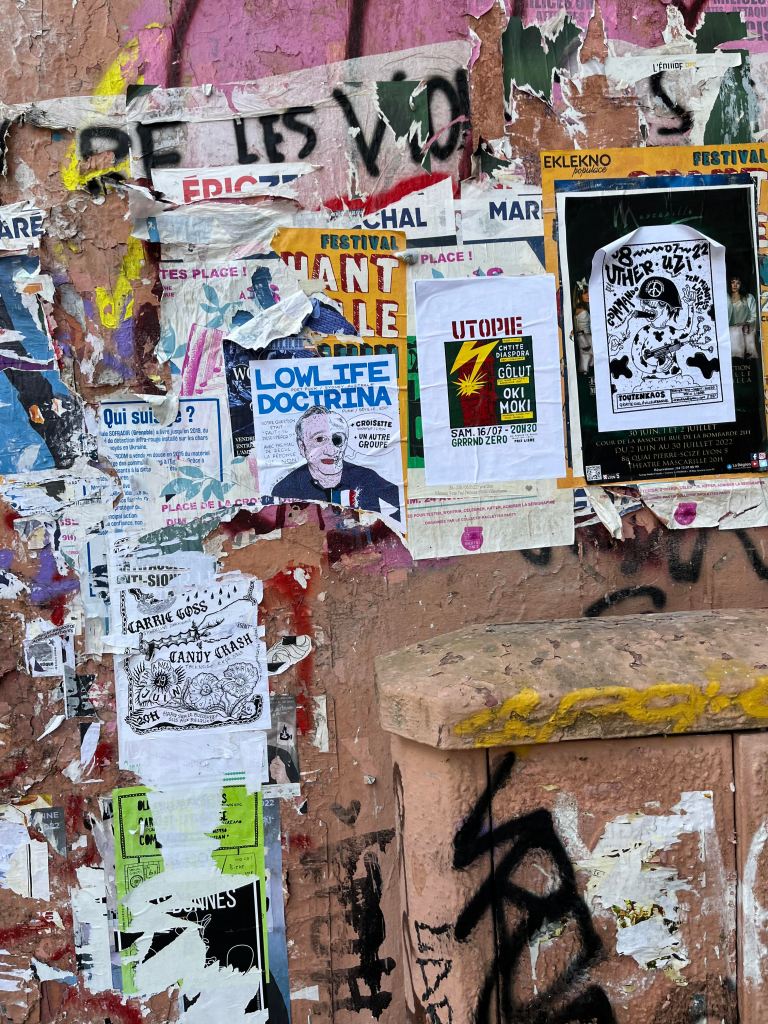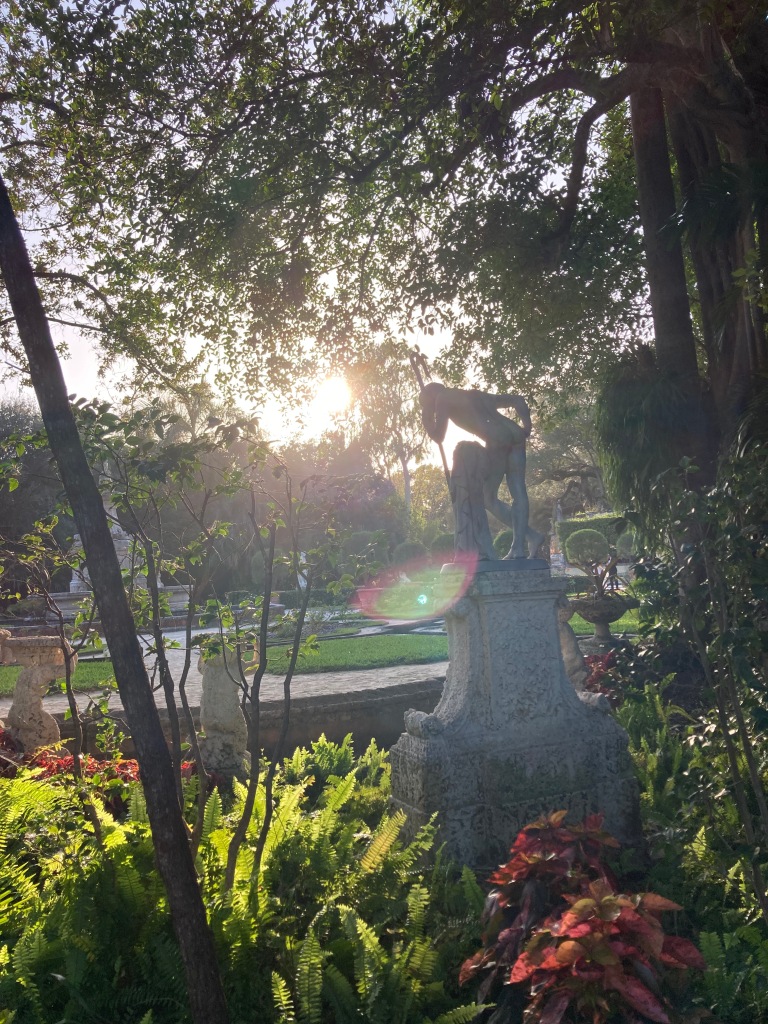
by Christopher Carlos Montejo of FIU
Paris is a sprawling network of streets, tunnels, and rails. Personally, it is the most well-developed city transport system I’ve ever traveled in. Miami is the worst offender as it is untraversable without a car, while New York stands out as the United States’ best. Yet New York pales in comparison to Paris. Among many of the train lines in Paris, one of the most fascinating is Line 6. It is host to some of the most interesting stops in all of Paris. From the Eiffel Tower to Arc de Triomphe, line 6 is full of tourist hotspots, lesser-known museums, and incredibly important cemeteries and gardens.
Denfret-Rochereau

The Denfret-Rochereau stop’s most notable sights are the Catacombs and the Museum of the Liberation of Paris. The Museum of the Liberation of Paris features tons of information on Jean Moulin, one of the most iconic and important figures in World War II and the liberation of Paris. He was not famous because of his legendary battle skills, as he never fought, he was important because he was an incredible leader and organizer. His role in the war was one of a kind and without him maybe there would be no liberation. It’s a testament to the many roles of war and how we can contribute as individuals to a greater cause. His contribution will forever be remembered and honored. They also had a temporary exhibit on photography of war by women, which was fascinating. Rarely do we speak of the roles of women in wars, so it was amazing to see women take on an incredibly important role, which is also artistic as well as journalistic. Across the museum are the Catacombs. The Catacombs are haunting and everyone should experience them once in their lives. It was originally created as a better place to store the dead, as above-ground cemeteries can be unsanitary and space-consuming. Walking through the tunnels, it’s unbelievable to think that whenever you’re walking on the street in Denfret-Rocheraeu, you are above the Catacombs. It felt never-ending and infinite as if there were trillions of dead. Think of all the history and people that are now stored underground. It makes one think of how they would like to be buried and remembered.
Raspail
Raspail most notably is next to the Giacometti Institute and the Cartier Foundation for Contemporary Arts Museum. The Giacometti Institute is host to the artist Alberto Giacometti. A Swiss sculptor and artist, he is regarded as one of the most important sculptors of the 20th century. His work is haunting and borderline creepy to see in person, the string-like figures can be disturbing for some, but I found them oddly beautiful and touching. His portraits of heads and busts are fascinating and almost intimate in their expressiveness and intensity. His technique is one of a kind. The Cartier Foundation for Contemporary Arts Museum is a beautiful space for exhibitions. The architect Jean Nouvel wanted to create a space that is synergistic with nature, therefore it has giant glass walls that do not separate the inside and outside but rather blend them. It’s a building that stands out from the rest of the Haussmann-era Art Nouveau buildings but is a modern flair rather than an eyesore. The artist featured when I visited was Sally Gabori, an Australian indigenous artist who began painting at 80 years old. Her work is fascinating as she started at a late stage in her life with no prior traditional art experience. She was not coming from a western arts background and was not trained in painting. Yet, her abstract works that cover massive canvases manage to capture the fleeting memories of her indigenous upbringing and life on her native island. She blends colors that create a sense of mystical nostalgia for a land that you left a long time ago, and wish to return to. She is one of my newest favorite artists, and she is an amazing person! The two artists you can see at this stop are from completely different periods of time, which gives you a glimpse into the evolution of art history and its forerunners.
Trocadero
Two major sites near the Trocadero stop are the gardens bearing its name, and the Cemetery de Passy. The Trocadero Gardens are beautiful and you have an amazing view of the Eiffel Tower from it. The garden was originally created for the Universal Exhibition of 1878, and then transformed for the 1937 Universal Exhibition, into the current garden we are familiar with. On the other side of the stop, you may find the Cemetery de Passy. The Cemetery is special and small, hosting famous artists Manet and Morisot, who are incredibly important in art history. Their works are present in the d’Orsay and other museums around the city, such as Manet’s most controversial work, Olympia, which shattered the art world. Manet is known for his riot-inducing works that captured the essence of modernity and modern life. He was also a pivotal figure in the art movement known as Impressionism. Morisot is notable for being one of the few famous female painters of her time, especially in the impressionist movement, as the art world is incredibly male-dominated. Her works are among the best of the movement, which helped carve a place for women in art, as you had to respect her amazing talent. She painted primarily landscapes and depictions of women, with a unique style that is difficult to copy.
Bir-Hakeim
It’s the Eiffel Tower, not much is needed to be said. From the stop, you have a beautiful view of the most iconic structure in the world. The Eiffel Tower is a monument to the French Revolution and the greatest (male) scientists. Along its beams, you can read the names of the most brilliant men in the history of science, but it is a shame women are not represented. Women scientists such as Madam Curie deserves recognition as much as any other scientist of her time, and I think they should update the tower’s names. It was originally going to be taken down, as the popular opinion of the time said it was the ugliest thing in the city and it was only for the Revolution’s anniversary and the 1889 Universal Exposition, but once radio lines were installed at the top, it stayed to this day. It’s interesting to think if the Montparnasse tower will become iconic or as famous as the Eiffel Tower, as it similarly is hated during its introduction. I doubt it. I remember being terrified climbing up the staircase as I’m scared of heights and falling even though I’m in one of the most secure buildings in the world. But once you’re at the top, it is a spectacular view of the entire city. It’s too bad you can’t see the Eiffel Tower from it.
Charles de Gaulle-Etoile
Of course, it goes without saying that this stop is the stop for the Arc of Triomphe. The Arc de Triomphe was originally Napoleon’s idea to honor and commemorate his military victories and his generals and soldiers, along with the French Revolution. It began construction in 1806 but was only completed 30 years after under King Louis-Philippe. I remember feeling strange as I passed through it, as I never like to idealize or romanticize war. But the eternal flame and the unknown soldier were truly touching. Being forgotten is my greatest fear and giving a life just to be forgotten sounds like the worst thing that could happen to someone. To see a memorial to all of those that have given their lives to a greater cause such as the French Revolution and have them honored was the most beautiful of the whole monument. It never is extinguished, unless a drunk man decides to use it as an impromptu bathroom. The stop is named after Charles de Gaulle, former president and icon of World War II. He was the leading figure in the liberation of France and represented the France that did not want to bow to Nazi or Vichy control. He broadcasted out to millions of French, calling them to take arms and fight for a liberated France. He was incredibly brave and without him, France would have not had the strong leader it needed to break free from Nazi control and cooperation.
Montparnesse-Bienvenue

In this stop, there is Yin and Yang. On one side, You have the Montparnasse cemetery, which is the second largest cemetery in the city and is the final resting place of some of the greatest literary and artistic minds. On the other, the biggest eyesore in the whole city is the Montparnasse Tower. The tower, which can be seen from anywhere unlike the Eiffel Tower, is the antithesis of Paris. The only redeeming factor is that it has an amazing view from the balconies, especially since you can’t see it if you’re looking out from it. When I visited the Montparnasse cemetery, I spent more time than I expected. Some of the most important graves I paid respects to were Simone de Beauvoir’s and Jean-Paul Sartre’s tombs, which were covered with kisses all over it as well as Baudelaire’s tomb. The famous sculptor Ossip Zadkine had his initials spelled with stones, and Man Ray had a simple tomb with his name etched into it with a stone-like crayon. In Paris, graveyards are a cultural phenomenon. I never visit graveyards in Miami, but here you find people reading books or playing the newspaper’s crossword puzzle sitting on a bench. Everyone finds a way to leave a mark on their favorite artist’s tomb, and although it can sometimes be damaging, I think it’s beautiful. I left stones at the base of the tombs I visited, as a memento to say I made the pilgrimage to visit you, that I was there, and that I left my mark. It’s comforting to know these people are remembered so strongly through death that they have many daily visitors that bring tokens of affection.
In my exploration of Paris, I have come to learn and understand how much history is in this city. Every stop on every line is a site of cultural or historical significance. You can see it by how many streets are named after famous writers or philosophers. There is always a plaque commemorating the deaths of those who liberated France in World War II. There’s an abundance of statues honoring the French Revolution. Every street corner is special and important in Paris, sometimes you don’t even notice.
Bibliography
“Charles De Gaulle.” Encyclopædia Britannica, Encyclopædia Britannica, Inc., http://www.britannica.com/biography/Charles-de-Gaulle-president-of-France.
“The Birth of the Eiffel Tower – Official Eiffel Tower Website.” La Tour Eiffel, 4 Jan. 2022, http://www.toureiffel.paris/en/the-monument/history.
“History of the Arc De Triomphe.” Arc De Triomphe, 26 July 2019, http://www.paris-arc-de-triomphe.fr/en/.
“Trocadero Gardens.” ParisCityVision, http://www.pariscityvision.com/en/paris/gardens/trocadero-gardens.











